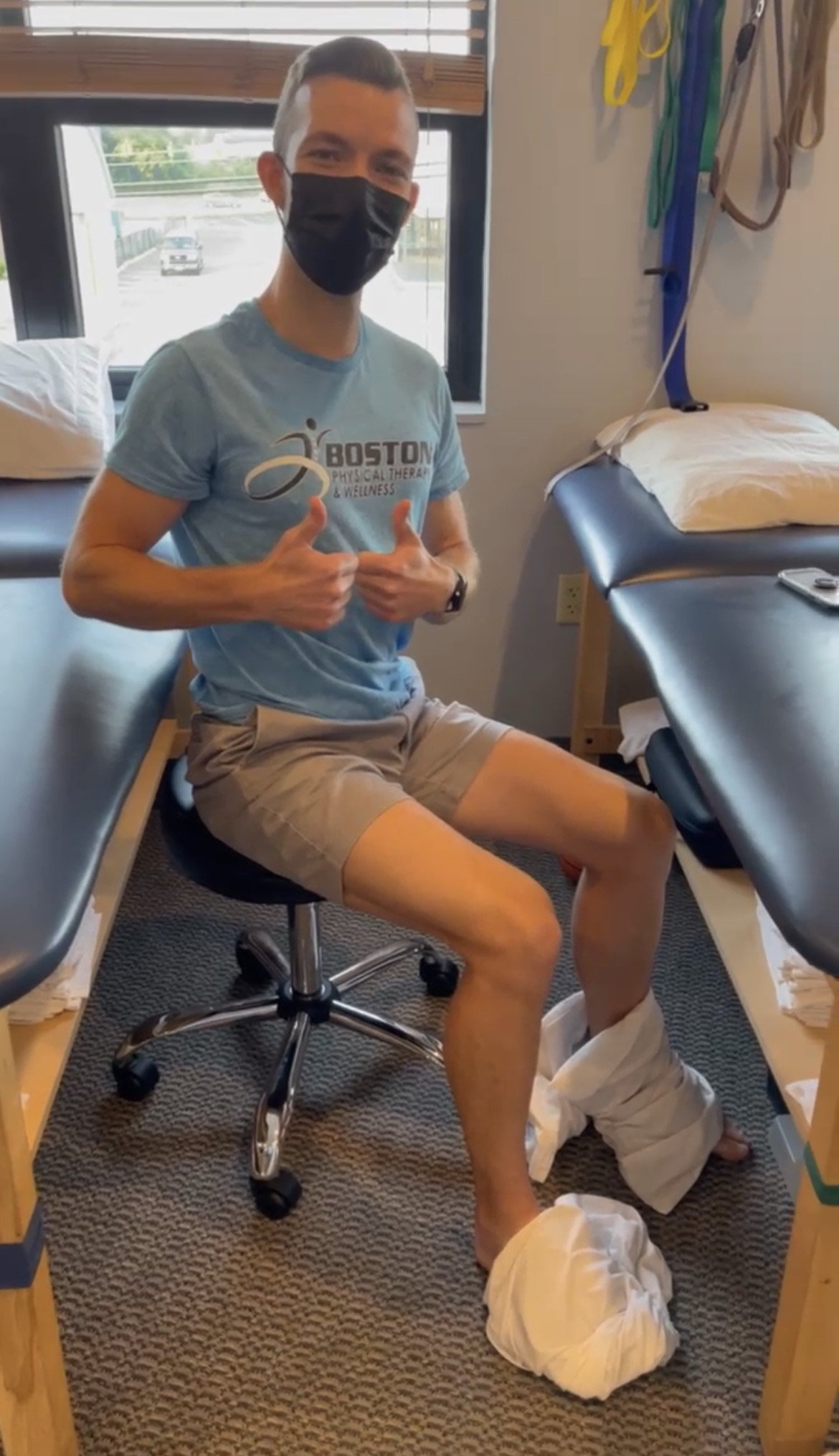Diagnosing and Running with Autoimmune Disease
Years of Running with Autoimmune Disease
In July of 2021, I woke up completely unable to bear weight on my right foot. My right knee buckled, and I awkwardly fell forward, landing on all fours. In a panic, I called out of work for the day, made an emergency appointment with my doctor, and called my parents in tears.
That night had been yet another restless night in a series of restless nights. What little sleep I did get was interrupted by sheet-drenching sweats and a dull aching in my ankles and feet. But, this had become my “normal” over the previous decade plus. Every few months, night sweats and seemingly random joint pains would return for several weeks, and then…disappear on their own.
Despite having a childhood history of juvenile rheumatoid arthritis, I and everyone in my life missed what was happening. Every physician, physical therapist, and chiropractor I saw, however well intentioned, missed the mark with their diagnoses.
Piriformis syndrome.
SI joint dysfunction.
Plantar plate tear.
Plantar fasciitis.
Running injuries happen, and especially when I was just starting out in the sport, everybody assumed I just had typical running pains. My symptoms never quite fit the mold for any of these running injuries. I would go through a course of treatment, eventually feel better, and move on with my life.
Until I couldn’t.
Finding a Diagnosis of Ankylosing Spondylitis
In the year leading up to my flare, I ignored gradually worsening warning signs and continued to power through my day-to-day. Pain in the toes of my left foot relegated me to the spin bike. As I returned to running, the big toe of my right foot began to randomly ache and swell. But, my pain did not seem to correlate with my day to day activity level.
Again, as the months went on, foot pain eventually resolved on it’s own…but was replaced with rib pain?
“I must have strained something golfing,” I thought.
Then, the right side of my jaw began to ache and eventually lock up to the point that I had to puree my meals.
“Oh well, I’ll make an appointment with my dentist,” I told myself.
I kept denying the reality of the situation until that morning I physically could not get out of bed.
My physician was stumped. Imaging showed no fracture. Testing for Gout was negative. Finally, I pushed for bloodwork to investigate autoimmune involvement and a referral to a rheumatologist. At my first rheumatology appointment, my physician walked in with an amused look on her face and said,
“It seems like you already have an idea of what’s going on. What do you think?”
“I think I have ankylosing spondylitis,” I replied.
She laughed and said “Yep,” and tossed me a handful of brochures on my new diagnosis and potential medications.
Boston Marathon Dreams & Autoimmune Disease
It was a relief to finally have what seemed to be an accurate diagnosis and plan, but I was still concerned I wouldn’t be able to return to running and normal life. Most of the brochures featured older adults raving about how they could do yard work with less pain than before. That wasn’t my goal. I was supposed to run my first Boston Marathon in eight months- a dream as long as I’d been a runner. Was that realistic to do in eight months? Would running at all again be realistic? My rheumatologist made no guarantees- these medications take time to work and individual responses vary.
Fortunately, I am one of the lucky ones.
Two months after this first appointment, I was able to begin taking Humira. Within 48 hours of my first dose, I went from crawling around my apartment in the mornings, to going for a short run with almost no pain at all.
Months later, I lined up with 30,000 other runners at the start of the 2022 Boston Marathon. I cannot imagine that I will ever run a more emotional race than I did that day. It was not my fastest marathon, but it is by far the most meaningful to me.
Physically, I still manage symptoms of my ankylosing spondylitis diagnosis. I do have occasional small flare ups. Humira is also an immunosuppressant, which leaves me susceptible to infections and illness. But overall, I feel better than I have at any point in my life that I can remember. Any symptoms I do get are mild. I am in a great spot.
An Informed Running Physical Therapist, Trainer & Run Coach
My experience with ankylosing spondylitis has completely changed my perspective on running. I still train hard, enjoy racing, and love working toward a personal best, but I am far less concerned with results. I am truly grateful to be able to run at all.
Having an autoimmune disease has also informed how I practice as a running physical therapist and run coach. I’ve been able to identify the signs of AS and other autoimmune issues in patients, and refer them out to rheumatologists for appropriate treatment due to my own experience. Frustrated runners who were continuously relegated to the sidelines due to mysterious running injuries and not getting the right answers from other physical therapists and healthcare professionals.
More broadly, though, I know what it is like to feel like you might never get back to running. I know how hard it can be to accept that something is wrong physically. I know how hard it is to make a change in how you are approaching a setback. And I am a better physical therapist for this.
I hope sharing my story helps a runner struggling with misdiagnosis find some answers. And I hope it inspires other runners managing autoimmune disease to still work toward all their goals!







